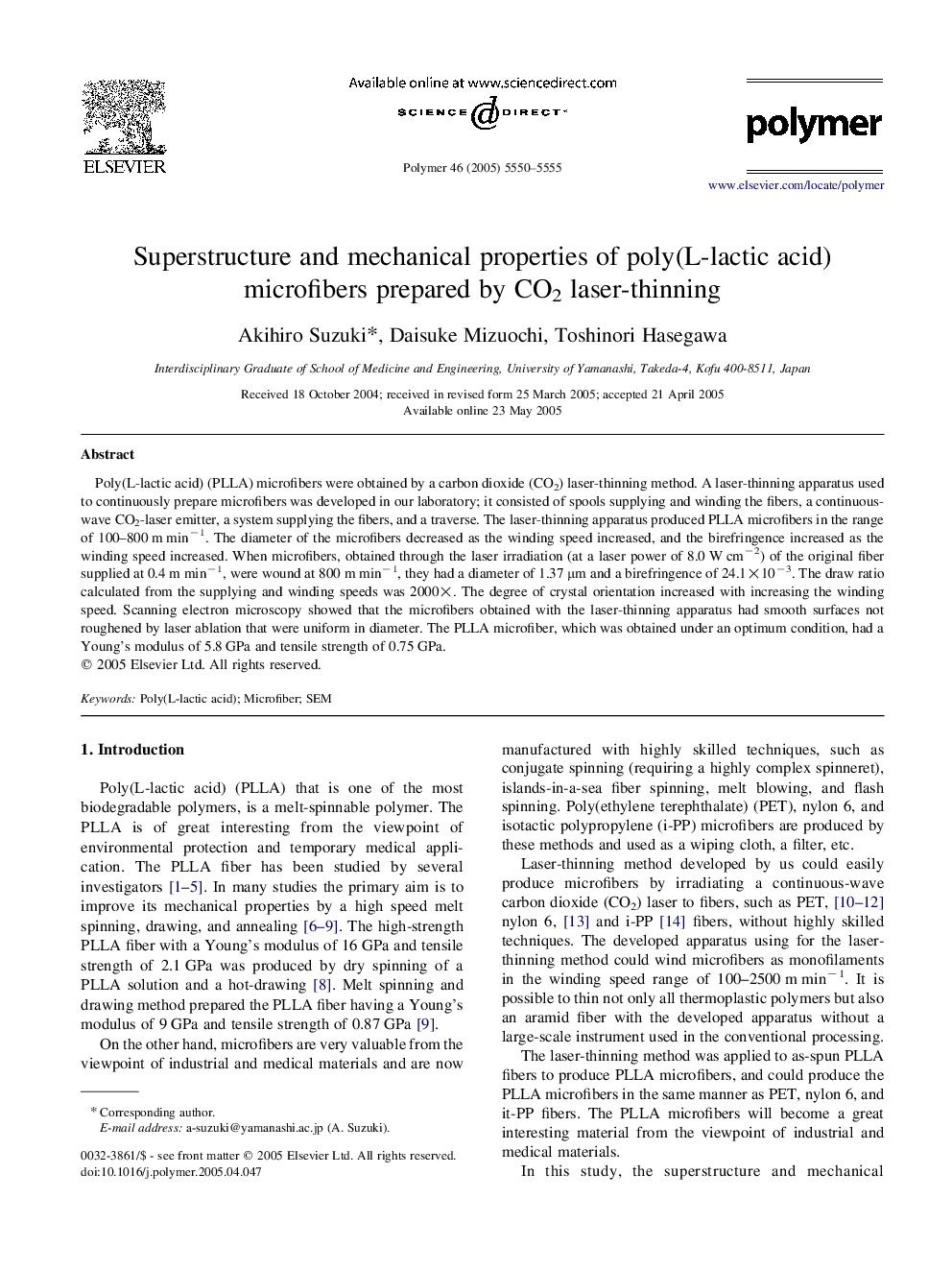| Article ID | Journal | Published Year | Pages | File Type |
|---|---|---|---|---|
| 5190892 | Polymer | 2005 | 6 Pages |
Abstract
Poly(L-lactic acid) (PLLA) microfibers were obtained by a carbon dioxide (CO2) laser-thinning method. A laser-thinning apparatus used to continuously prepare microfibers was developed in our laboratory; it consisted of spools supplying and winding the fibers, a continuous-wave CO2-laser emitter, a system supplying the fibers, and a traverse. The laser-thinning apparatus produced PLLA microfibers in the range of 100-800 m minâ1. The diameter of the microfibers decreased as the winding speed increased, and the birefringence increased as the winding speed increased. When microfibers, obtained through the laser irradiation (at a laser power of 8.0 W cmâ2) of the original fiber supplied at 0.4 m minâ1, were wound at 800 m minâ1, they had a diameter of 1.37 μm and a birefringence of 24.1Ã10â3. The draw ratio calculated from the supplying and winding speeds was 2000Ã. The degree of crystal orientation increased with increasing the winding speed. Scanning electron microscopy showed that the microfibers obtained with the laser-thinning apparatus had smooth surfaces not roughened by laser ablation that were uniform in diameter. The PLLA microfiber, which was obtained under an optimum condition, had a Young's modulus of 5.8 GPa and tensile strength of 0.75 GPa.
Keywords
Related Topics
Physical Sciences and Engineering
Chemistry
Organic Chemistry
Authors
Akihiro Suzuki, Daisuke Mizuochi, Toshinori Hasegawa,
